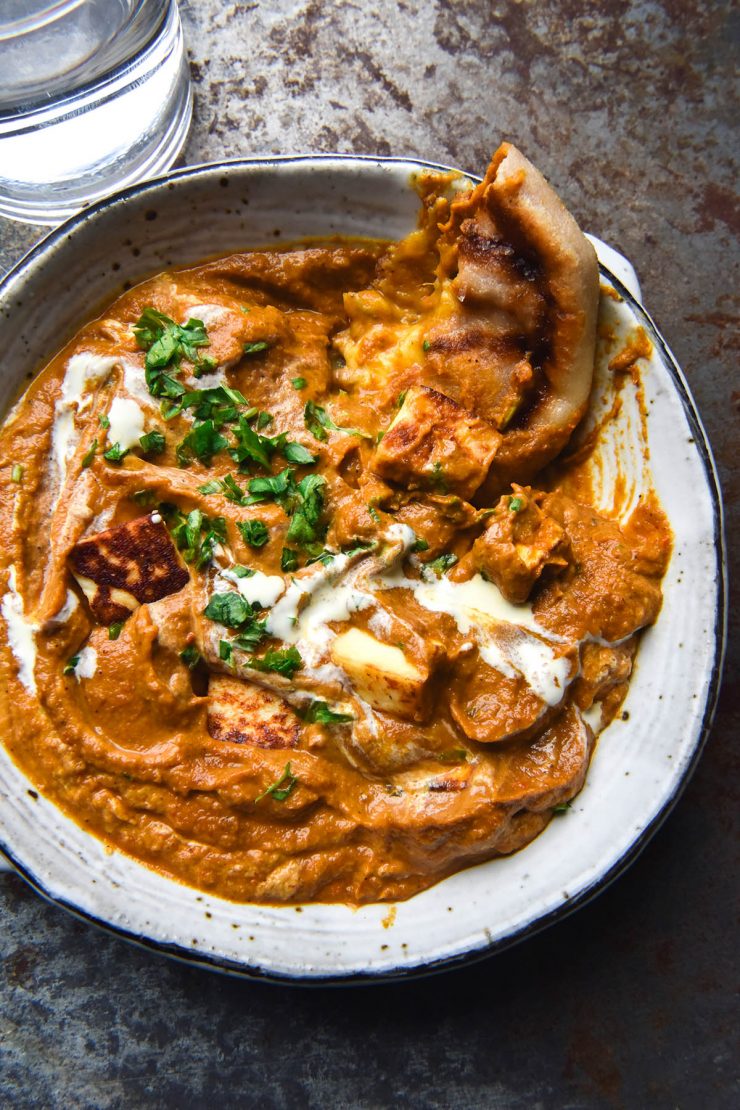
This FODMAP friendly paneer curry is a product of three things. Firstly, I wanted to use the lactose free paneer recipe that I posted on TikTok recently in something practical and delicious. Secondly, I decided to play around with the vegetables in my FODMAP friendly curry base recipe. I figured I could simplify the vegetables used and make it even more FODMAP friendly. Thirdly: low FODMAP Indian vegetarian recipes are hard to come by.
FODMAP friendly paneer curry
This FODMAP friendly paneer curry is made without onion or garlic, obviously. It is nut free and easily made vegan (with tofu instead of the paneer, among other things). It is incredibly delicious – potentially one of the nicest things I think I have ever made.
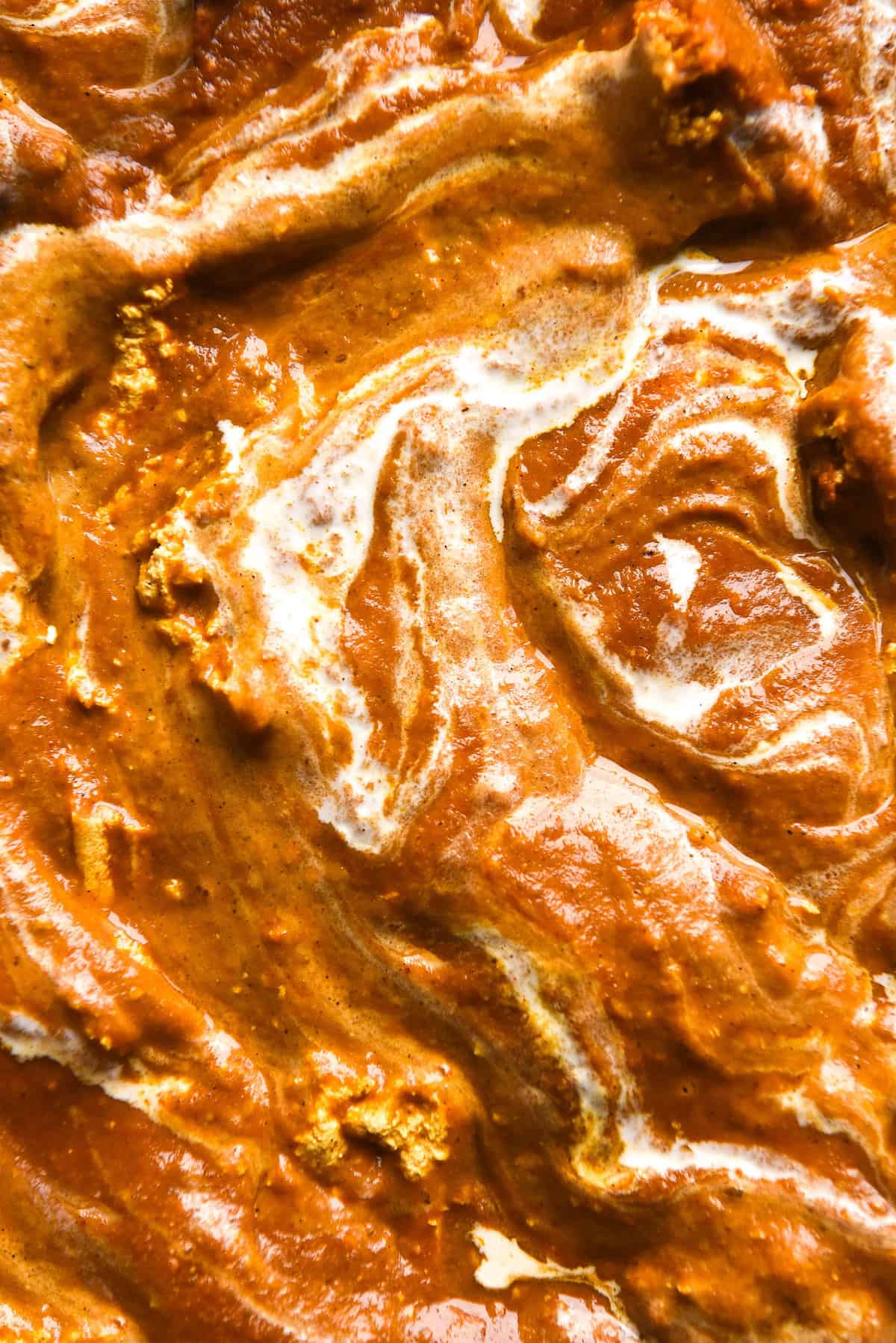
FODMAP notes
I have switched up the vegetables for this curry to ensure that the only moderate FODMAP veg are the capsicums and tinned tomatoes. As of July 2024, red capsicum is low FODMAP in 43g or 1/3 cup servings. They contain moderate amounts of fructose in serves of 59g or more. Green capsicum is low FODMAP in 75g serves, but a moderate serve is 250g, which suggests there’s plenty of wiggle room there.
Tinned tomatoes are friendly in 100g serves. Tinned Plum/Roma tomatoes don’t contain moderate amounts of fructose until they exceed serves of 182g. This makes them a lower fructose option than whole canned tomatoes, which contain moderate amounts of fructose in serves exceeding 132g.
You can also use my low FODMAP Nomato sauce recipe to replace some or all of the tinned tomato. One batch of Nomato sauce makes approximately 1.2kg, which is equivalent to 3 x 400g cans of tinned tomato.
In terms of dairy, I have used homemade lactose free paneer and lactose free full cream to keep this lactose friendly.
Monash has recently introduced a FODMAP threshold for spring onion greens. Spring onion greens are low FODMAP in 75g serves and contain moderate amounts of fructose in serves exceeding 97g. In Australia, a large supermarket bunch worth of spring onion greens weighs approximately 50g. So, this doesn’t change much but it does slightly increase the fructose content.
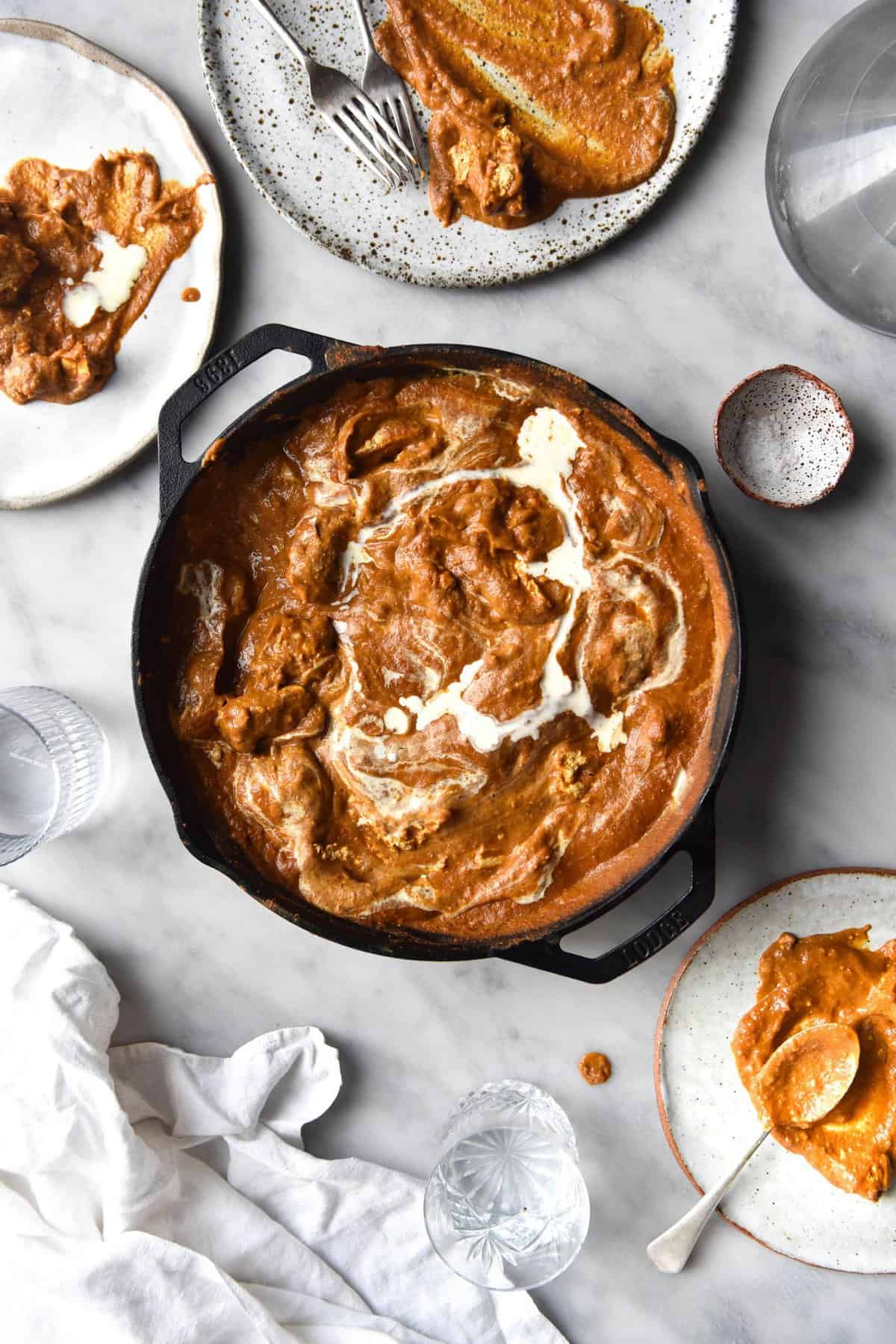
The low FODMAP curry sauce base
This sauce base is made up of spring onion greens, leek greens, ginger, capsicum and carrot. These vegetables are cooked down with a few spices before tinned tomatoes are added and the whole thing gets blended. I chose to use tinned tomatoes because they are easy and their FODMAP content stayed the same in the recent Monash tomato update debacle. They are inexpensive to buy year round and most houses have a tin lurking somewhere.
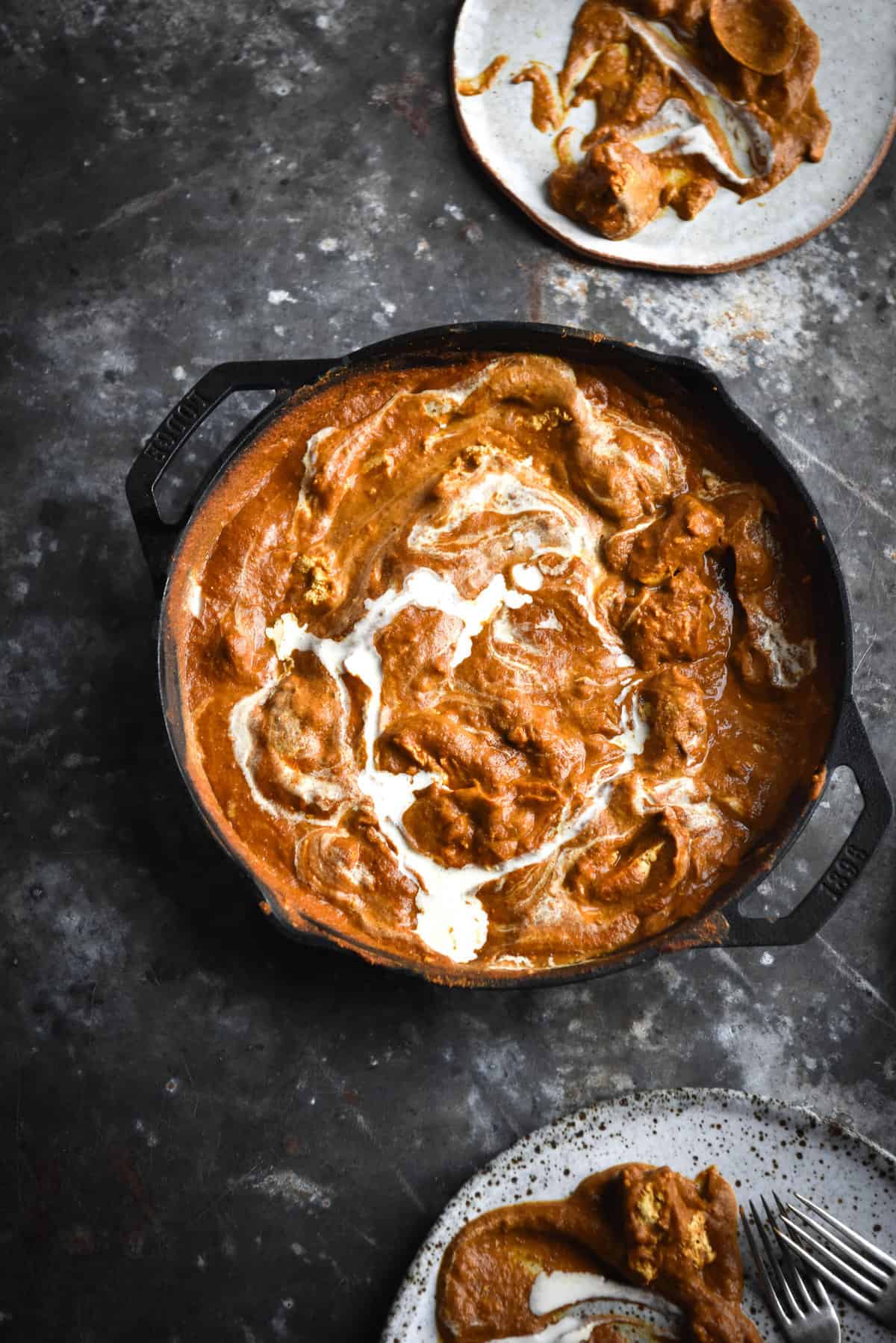
The curry paste
The curry paste is made up of generous quantities of spices. I think there are a lot of recipes online that are way too conservative with the spices. A good amount of spice is critical for that delicious, full bodied flavour without onion or garlic.
Fresh cardamom seeds (and by this I mean, not powder) garam masala, cumin and turmeric are the critical spices here. Paprika is added for the beautiful rich colour. Fenugreek and coriander can be omitted. If you’re topping the FODMAP friendly paneer curry with coriander, though, wash, chop and add the roots and stems to the curry sauce base.
The curry paste is finished with the juice of a lemon and tomato paste. You can thin it out with water or some of the curry sauce base until it is a paste like consistency. Once we’ve cooked the cardamom pods, the curry paste is ready to cook down. Too easy.
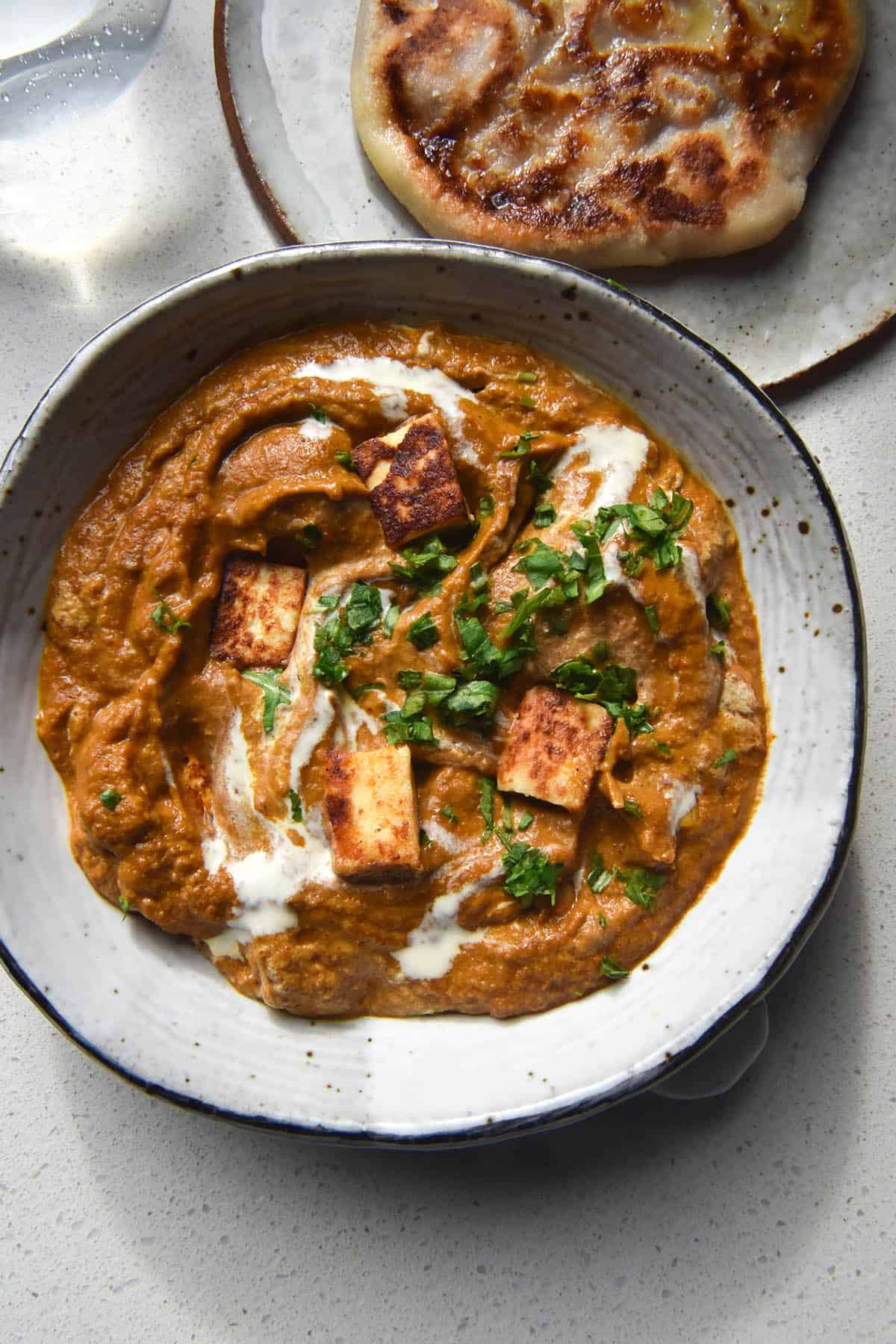
Homemade lactose free paneer
I have chosen to use homemade paneer made with lactose free milk in this recipe. I recently realised that paneer is incredibly easy to make, better than store bought and nearly half the price, too. Here is my recipe for easy homemade lactose free paneer.
Swaps and substitutions for your FODMAP friendly paneer curry
To make this FODMAP friendly paneer curry vegan, use tofu in place of paneer and a plant based milk/cream/yoghurt in place of the cream. This also applies if you are dairy free.
Some of the spices are less critical than others. The fenugreek, paprika and coriander powder can be omitted.
You can also use my low FODMAP Nomato sauce recipe to replace some or all of the tinned tomato. One batch of Nomato sauce makes approximately 1.2kg, which is equivalent to 3 x 400g cans of tinned tomato.
Red capsicum can be a source of fructose, while green capsicum can be a source of fructan. You could try choosing one or the other to cater to your specific requirements. I would suggest maybe adding a little sugar if you use all green capsicum. The red capsicum adds a bit of balanced sweetness to the curry sauce base.
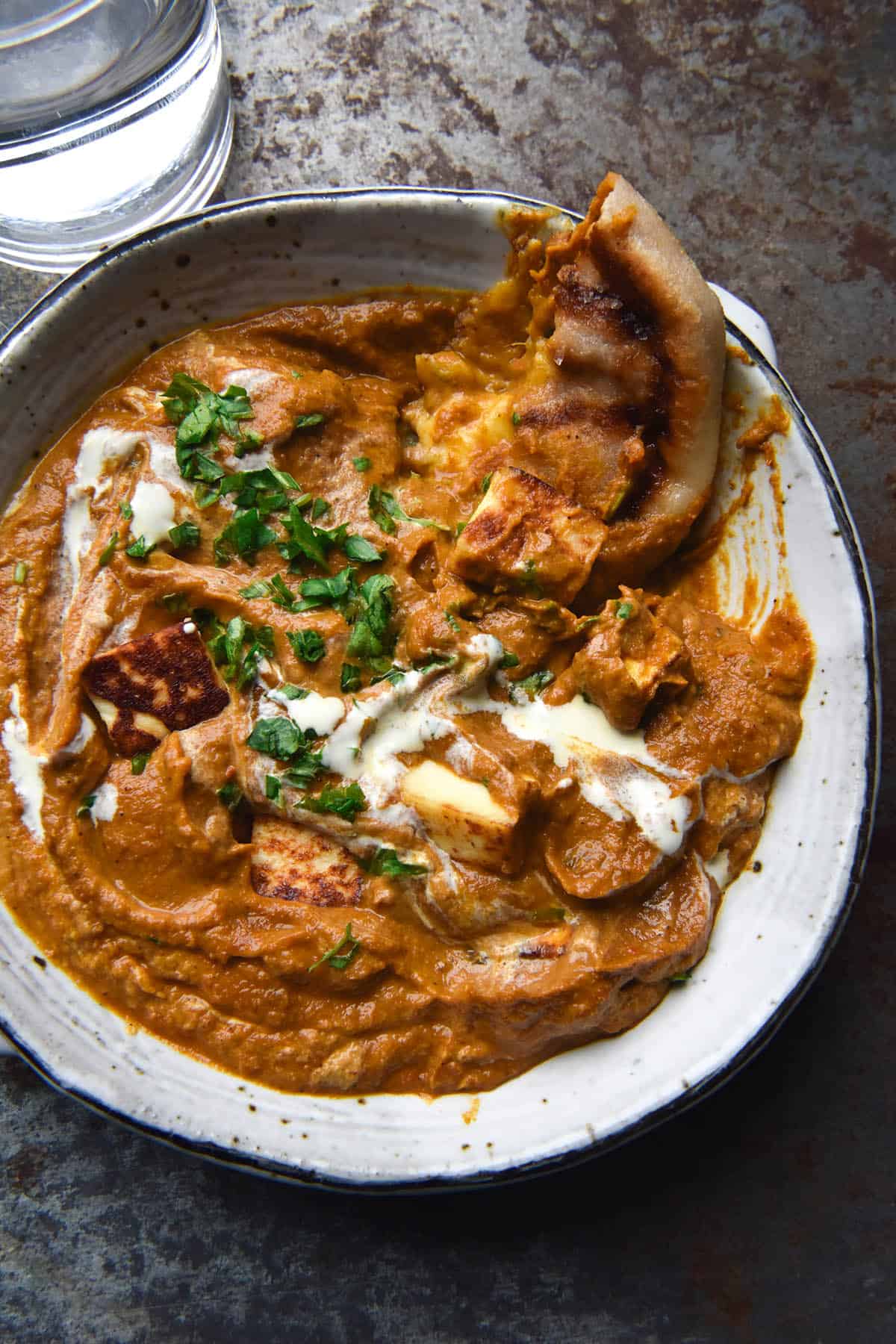
What to serve with your FODMAP friendly paneer curry
Some gluten free flatbreads or cheesy garlic naan. Actual heaven.
Garlic infused ghee, for topping the naan. No naan is complete without garlic butter, and infusing ghee brings the garlic without the FODMAPs.
Some rice. It’s always a good idea to pad things out with some rice to ensure you remain under the threshold for FODMAP. I like to make this curry serve 6 people.
The hottest of hot tips: if you make the cheesy naan to serve with the FODMAP friendly paneer curry, add a spoonful of curry gravy to each flatbread when you add the cheese. Topped with some garlic infused ghee? Life changing stuff.
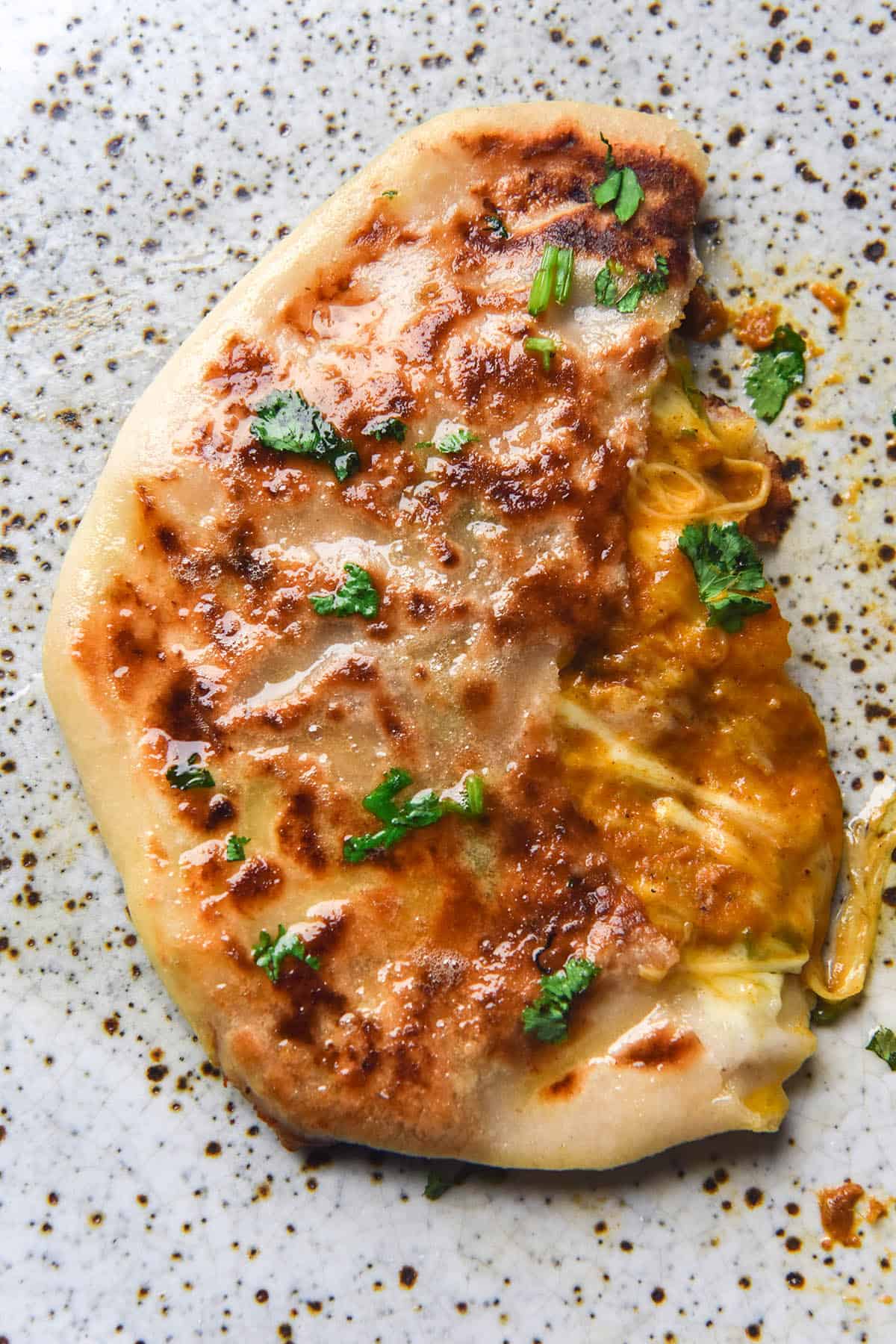
My FODMAP friendly vegetarian Indian recipes
- Low FODMAP shahi paneer
- Homemade lactose free paneer
- Gluten free cheesy naan
- Gluten free Aloo paratha
- Low FODMAP vegetable curry
- The gluten free, FODMAP friendly samosas in my cookbook, Intolerance Friendly Kitchen
- Low FODMAP kind of daal
- Low FODMAP Malai kofta
More hearty vegetarian recipes without onion and garlic
- Low FODMAP vegetable tagine (vegan)
- Low FODMAP vegetarian moussaka that is easily made vegan
- Low FODMAP vegetarian or vegan chilli
- This gluten free vegetarian lasagne
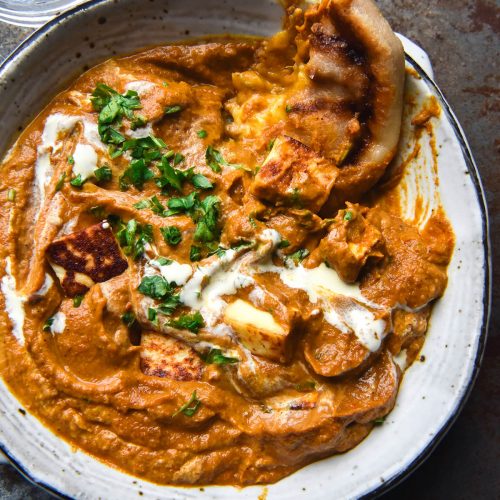
FODMAP friendly paneer curry
Ingredients
For the curry sauce base:
- 60ml (3 tablespoons)* neutral oil or ghee
- 50-75g (1 bunch) spring onion greens chopped
- 1-2 leek greens thoroughly washed and chopped
- 1 small red capsicum chopped
- 1 small green capsicum chopped
- 2-3 large carrots reasonably finely chopped
- 50 g ginger chopped
- 1 x 400g tin of plain tomatoes any sort are fine as long as they are unflavoured (Roma/Plum are slightly lower in fructose)
- 2 teaspoons ground garam masala
- 1 teaspoon ground cumin
- 1 teaspoon ground coriander
- 1 teaspoon sweet paprika
- 1/4-1/2 teaspoon Asfoetida hing powder, optional (see notes)
- 250-500ml (1- 2 cups)* water
For the curry paste:
- 1 tablespoon* paprika (optional, see notes) (4 US, British and NZ teaspoons)
- 1 tablespoon* cumin powder (4 US, British and NZ teaspoons)
- 2 tablespoons* garam masala (8 US, British and NZ teaspoons)
- 1 tablespoon* fenugreek seeds (optional) (4 US, British and NZ teaspoons)
- 1 tablespoon* coriander powder (4 US, British and NZ teaspoons)
- 1 teaspoon turmeric powder
- 1 teaspoon Kashmiri chilli see notes
- 50g (2 tablespoons)* tomato paste
- Juice of 1 smaller lemon
To finish the curry:
- Seeds of 10-20 cardamom pods discard the pods and keep the small black seeds
- 1 quantity of homemade lactose free paneer see notes
- 125-250 ml (1/2 – 1 cup)* lactose free full cream (you could also use yoghurt milk or a plant based substitute see notes
- Seasoning to taste
- Pinch of sugar, if necessary
Instructions
To make the curry sauce base:
- Place the ghee in a very large cast iron skillet, pan or wok over a low-medium heat. Add the spring onion and leek greens, and cook for 2-3 minutes or until verdant green and fragrant. Add the ginger, capsicums and carrot and cook until soft – an additional 10 or so minutes. Add water whenever the vegetables are sticking and you sense they need it.
- Add the tinned tomatoes and spices and stir to combine. Top with the 1-2 cups of water, stir and place a lid on. Allow to cook for 15-20 minutes until you can pierce the carrot easily with a knife.
- Once the vegetables are completely soft and the mixture is fragrant, set aside to cool. Once sufficiently cool, place the mixture in a high-speed food processor and blend until you have a smooth curry gravy.
To make the curry paste:
- Combine all the spices (except for the cardamom seeds) for the curry paste in a bowl. Add the lemon juice and tomato paste and stir to form a paste. Add some water or some of the curry sauce base if it’s feeling thick or dry.
To finish the curry:
- While you’re waiting for the curry base to cool, wash and reheat the large skillet or wok and return it to the heat. Preheat really well, then add a scant amount of oil and fry your cubes of paneer until golden on all sides. Remove from the skillet and set aside.
- Add 1-2 tablespoons more oil or ghee to the skillet and place over a medium heat. Add the cardamom seeds to the hot oil and cook for a few minutes until fragrant. Add the spice paste and fry off for a minute or two until fragrant.
- Once the mixture is fragrant, add all the curry base and stir thoroughly to combine.
- Add the cream or milk as you see fit, then finish with the paneer cubes. Taste the curry for seasoning, then cook for a few minutes longer until the paneer is warmed through before serving.

No Comments